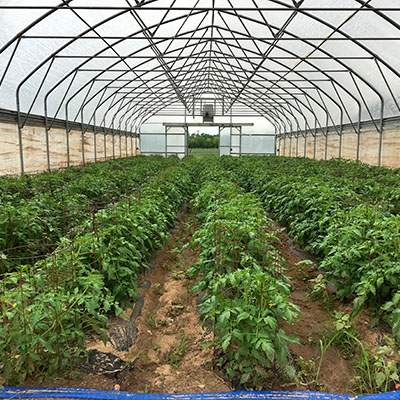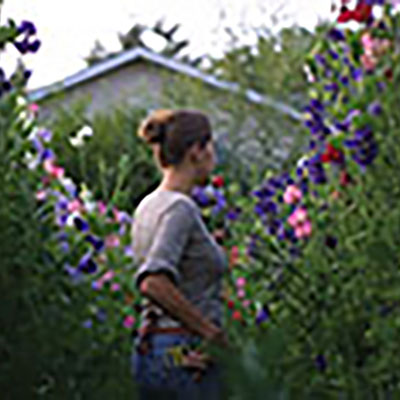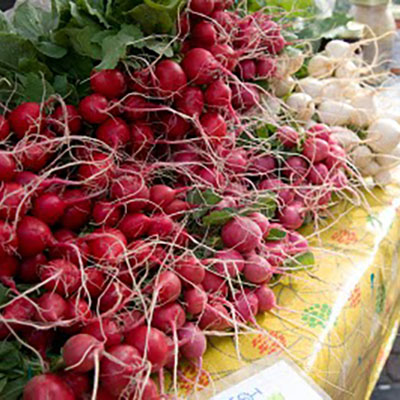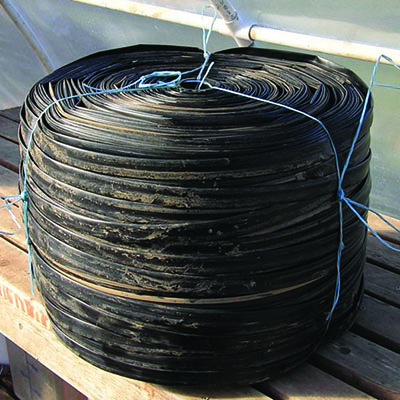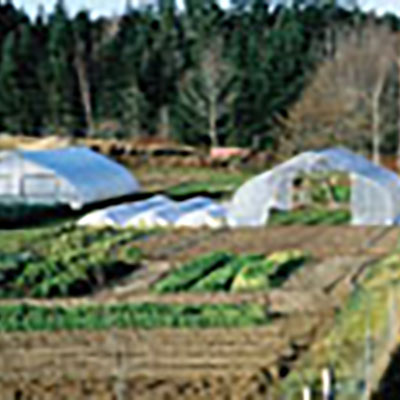Growing for Market in partnership with Johnny's Selected Seeds has created a library of expert information about growing and selling vegetables and flowers. Links in the article will take you to johnnyseeds.com.
Subscribe to Growing for Market for more great ideas about growing and marketing!
For more topics in the series, click on Market Farming Basics in the left column.

![]()
Scouting for pests and diseases
One of the fringe benefits of weeding is that while you are out there hoeing or hand pulling weeds, you can monitor crops for any signs of damage from pests or diseases. Turn over leaves and look at the undersides, as that is where many insects lay eggs and where diseases first appear. If a plant is wilted, pull it up and look at the roots to see if they are stunted or rotting. Unless you are familiar with a specific insect and know that it’s going to harm your crop, do some research before you take action.
Many insects are beneficial and you should learn what they look like in all their life stages so you don’t inadvertently kill these allies. Likewise, learn the life cycles of pests that are common in your area so you can watch for them even before they start to do damage. We highly recommend the book Garden Insects of North America by Whitney Cranshaw. This is a huge (656 pages), comprehensive book about insects that are likely to be found in vegetable and fruit fields and gardens. Insects are categorized by the type of damage they do, which makes it easy to narrow down the potential culprits when you spot a problem.
Another essential reference is Identifying Diseases of Vegetables from Penn State University, which includes concise descriptions and large color photos of common diseases.
In addition, there are many online resources to help you identify problems. Check with your State Extension Service to see if it has an IPM (Integrated Pest Management) program for vegetables and fruits. If so, you might find information that will be targeted to your area. If not, do an internet search for "IPM vegetable" and pick the site from the state nearest yours. Many of these IPM sites have excellent photos.
Once you know the nature of the problem you're dealing with, you can turn to Johnny's chart of physical, biological, and botanical controls for all the most common pests and diseases of vegetables.
The chart lists multiple strategies, from row cover to inexpensive repellents to certified-organic insecticides.
Keep records of pest and disease outbreaks. Write down the dates you noticed the problem and took action on it; the plant's stage of development; the temperature and general weather conditions. Review your notes at the start of next season, and you'll be better prepared to catch problems before they become serious.
Visit Johnny's Selected Seeds for more free information about growing produce, herbs, cover crops and flowers.
• Subscribe to Growing for Market for the latest news and ideas.
Reprinted from JSS Advantage June 2010

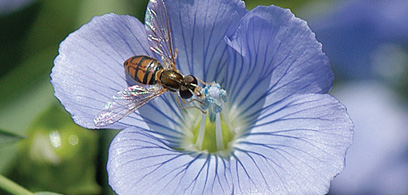 Insect pollination is essential to many vegetable and fruit crops, including tomatoes, squash, pumpkins, watermelons, blueberries, blackberries, apples, almonds, and many others. In the case of watermelons, there will be no fruit without pollination. Some vegetables don't require pollination to set fruit, but pollination by bees will result in larger and more abundant fruits. Nearly 75% of the flowering plants on Earth rely on pollinators to set seed or fruit, as well as one-third of our food crops, and most pollination is performed by honey bees, native bees, and other insects.
Insect pollination is essential to many vegetable and fruit crops, including tomatoes, squash, pumpkins, watermelons, blueberries, blackberries, apples, almonds, and many others. In the case of watermelons, there will be no fruit without pollination. Some vegetables don't require pollination to set fruit, but pollination by bees will result in larger and more abundant fruits. Nearly 75% of the flowering plants on Earth rely on pollinators to set seed or fruit, as well as one-third of our food crops, and most pollination is performed by honey bees, native bees, and other insects. 